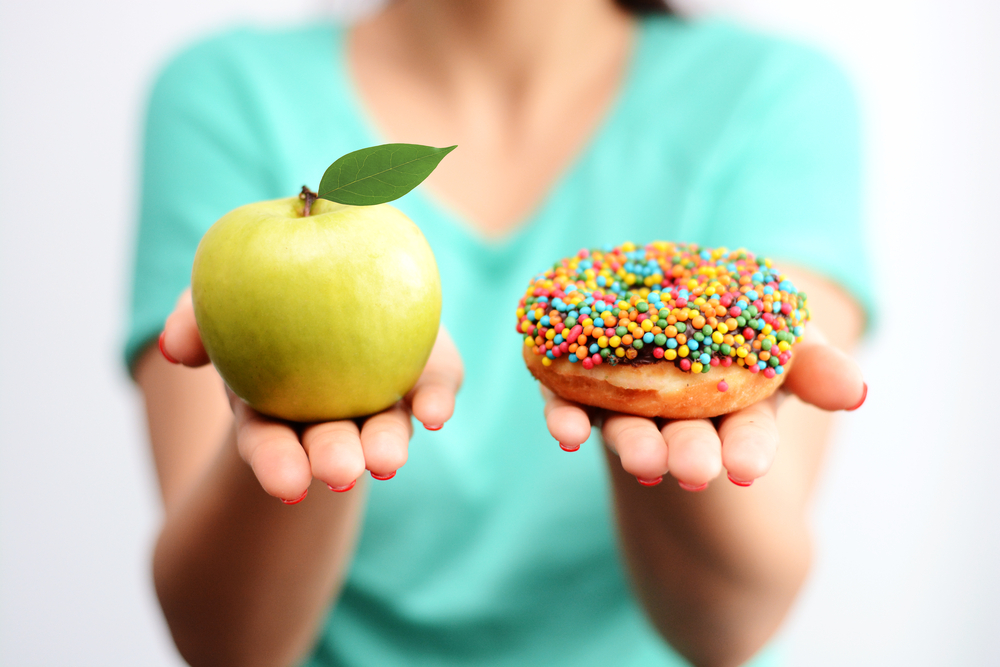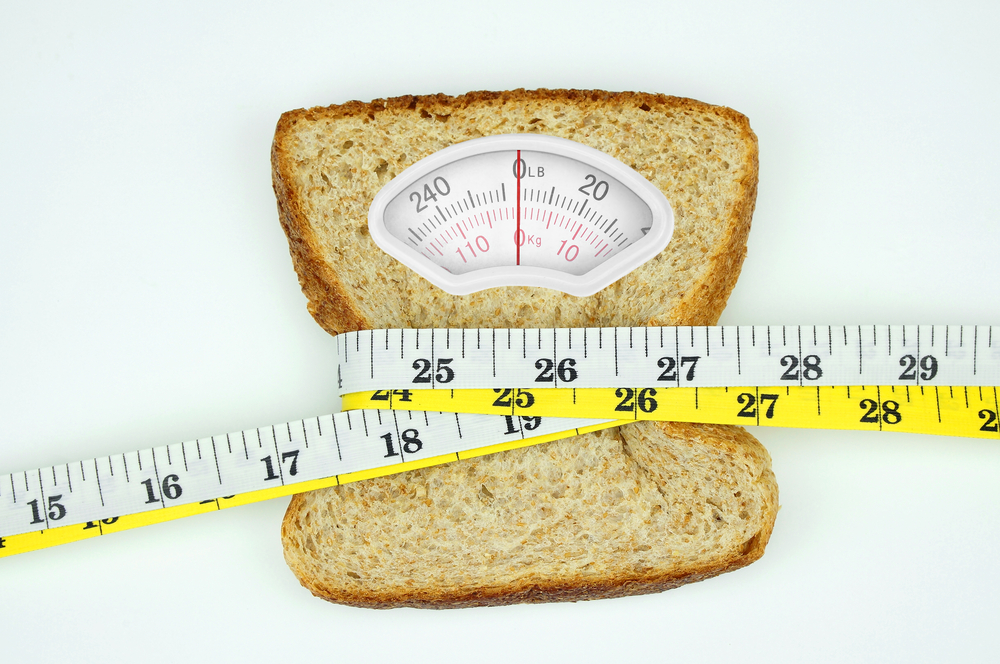Does counting calories help you to lose weight, or mean you could be missing out on nutrients? New government advice tells us to eat 400 calories for breakfast, 600 for lunch and 600 for dinner. We ask, do we focus on quality or quantity?
Keeping your weight in check is not easy, and if the headlines of the last few weeks are to be believed, it’s because none of us realise how much we are eating! ‘Calorie creep’ is the phenomenon by which we all eat significantly more calories than we own up to – to other people, or ourselves. Data from the Office for National Statistics showed that the average person in this country consumes 50 per cent more calories than they realise, women typically taking in 800 extra, men 1,000.
To counteract this, Public Health England (PHE), a government agency from the Department of Health, last month released new guidelines for calorie consumption, stating that we should eat 400 calories for breakfast, 600 for lunch and 600 for dinner. But there was an immediate backlash from other nutrition experts, so we asked them to explain the calorie counting clash.
How many calories do I need per day?
Dr Alison Tedstone, chief nutritionist at Public Health England (PHE) says: ‘Adults are consuming on average 200 to 300 more calories than they need each day. Over time, these extra calories build up and can cause unhealthy weight gain.
‘Excess calories are contributing to our country’s growing obesity problem, causing a range of health issues including heart disease, type 2 diabetes and some cancers – treating obesity is costing the NHS around £6 billion per year.
‘Adults consume around a quarter of their calories from eating out, with many unsure how many calories they need each day. The campaign aims to help people become more aware of the calories they consume on the go, whether picking up breakfast on the way to work, having lunch at their desks, or when buying everyday meals.
‘Major retailers – including Greggs, McDonalds, Starbucks and Subway – are promoting a range of options to help their millions of customers find 400 and 600 calorie meals.
‘It’s clear that excess calories are driving weight gain for many. Busy lives and too much food mean we’re often eating more than we realise – especially when we’re grabbing food out and about. This can have a significant impact on our waistlines and our health.
‘The 400-600-600 tip can help people make healthier choices when eating and drinking on the go. It’s encouraging to see major high street companies promoting lower calorie options, and we hope that more will follow suit.’
‘Cut down portions to lose weight’
Rob Hobson, Healthspan head of nutrition and author of Cheats & Eats, says: ‘It comes as no surprise that Brits’ portion sizes are out of whack. The portion size of the food you eat will undoubtedly make a difference to your overall calorie intake. Saying that, the type of foods you eat can impact on satiety and overall health, which is why it’s often said that not all calories are created equally.
‘The portion sizes of manufactured foods have increased, which has skewed peoples’ perceptions. There was a time when a “sweet treat” came as a 30g pack of sweets but now most people buy these in “sharing packs”. Such packs come with a “treatwise” recommended portion size of 25g, but how many people understand what that looks like? How many check the back of the pack and once opened, and how many seal the pack up for another day?’
What is portion size?
’Understanding portion size and what that actually looks like is difficult, and even many trained professionals have to refer to guidance on the topic. Sizes need to be represented as practical units that people can understand. Food portions given in calorie equivalents are useful – as long as people understand the number of calories they need.
‘One alternative concept offered by The Royal Society of Public Health is to show the amount of exercise required to burn off the calories from a portion of food, which could help people to associate portion size with activity, but given the size restrictions of food packets this is probably not a viable option.
‘Using a smaller plate helps people understand how much to eat. Teamed with the basic concepts of mindful eating (slowly, chewing the food properly) while preparing healthy meals containing a handful of protein and wholegrain carbs, lots of veggies, and a little healthy fat, then it’s even more effective.
‘How you get people to change their eating behaviours and food choices is the real issue and something that poses the greatest challenge to public health.’
‘Eat to nourish your gut’
Jeannette Hyde is a leading registered nutritional therapist who runs a private practice in central London, working with clients on gut health issues to improve wellbeing. She says: ‘If we are worrying about people eating bigger portion sizes and more calories than they admit to, I think we are focusing on out-of-date science that clearly isn’t working for the long term.
‘If you look at the new gut science, what you eat is more important than how many calories are in it. People who follow my Gut Makeover plan often eat a lot of calories, and sometimes more food than they normally would, yet they still lose weight. This is because they are bombarding their body with the right stuff. Each of us has billions of various bacteria living inside our digestive systems and these need to be balanced.
‘When this “microbiome” is healthy you feel less hungry, and put less weight on. So when you eat any meal, it’s about thinking what the bacteria in your gut would enjoy. Extra virgin olive oil, and a wide array of vegetables and fruits with their fibre and colours, enable lots of types of bacteria to thrive. You can also add friendly bacteria into the gut via probiotic fermented foods — my go-tos are fermented milk kefir (full fat!) or live sauerkraut (the type you find in fridges).
‘Apparently it takes on average 17 years for new research to hit frontline doctors’ surgeries. Perhaps this is why the science of the microbiome isn’t on the public agenda yet, and it may take many more years before Public Health England are focusing on what we and our microbiomes eat, rather than on our calorie count.’
- Take our gut health quiz
‘Cutting calories doesn’t work’
Sarah Flower, author and nutritionist, says: ‘Public Health England have come up with the suggestion we should all reduce our calories and has asked manufacturers to reduce calories by 20 per cent in the next five to six years. Is this really going to combat obesity? I think not.
‘The “eat less, move more” ideal for weight loss is fundamentally flawed. We eat less fat than ever before, yet obesity, diabetes, heart disease, cancer and Alzheimer’s are all increasing rapidly. Actually, we do more recreational exercise than we have ever done. We eat less fat than ever, yet we are getting fatter and sicker. Children are getting type 2 diabetes and non-alcoholic fatty liver disease. Is it really the down to the quantity of food or the quality?
‘The philosophy of reducing calories in order to allow the body to burn any unwanted fat sounds feasible but the reality is very different. Reducing calories works short term, but our bodies learn to adjust to the lower calorie intake. A high carbohydrate/low calorie diet stimulates a hormone called ghrelin which encourages us to eat more. Our leptin response – which signals to the brain when we are full – is turned off by a high carb, high fructose diet, so a low-calorie diet increases food cravings.
Focus on calorie quality
‘In our quest for calorie counting, we have seen a rise in foods all claiming to be low calorie and low fat, therefore healthy — yet that is far from the truth. The new guidelines from PHE are a manufacturer’s dream. They have been given the green light to reduce their portion sizes by 20 per cent, while no doubt keeping prices the same, and they can then claim their product is more healthy.
‘I say stop chasing calories and start looking at the quality of the food you eat. A diet of real food is the first and foremost change everyone should make. By avoiding processed, man-made foods, we will cut out unnecessary sugars and unhealthy fats, replacing them with nutrient-rich foods in their more natural state. Basically, it is not the food that’s at fault but what we have done to it.’
- Are fruit sugars bad for you?
- Everything you need to know for a healthy gut









